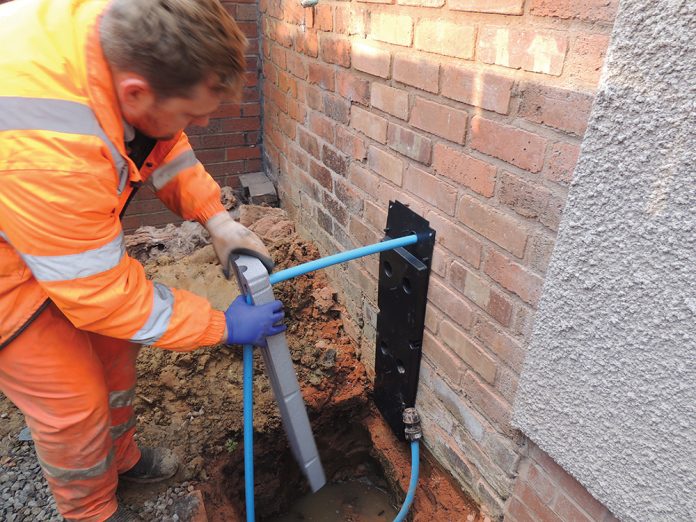Throughout the UK water companies are aware of the risk of lead contamination, and the potential of acceptable lead levels in drinking supplies being further reduced from the current 10 micrograms per litre. Lead location and replacement programmes are being ramped up, with the OFWAT Innovation fund announcing funding for several lead water supply pipe replacement schemes last month.
The legacy of lead water supply pipes has led to the recognition of the need to remove all lead from the water network. Although the use of lead in plumbing has been banned in the UK for more than 50 years, there are still many properties where a risk of lead contamination of water is a risk. Houses built before 1970 would have been constructed with lead water supply pipes. In some UK regions up to a third of these older properties are still receiving their water through these original lead pipes.1
Lead water supply pipes are now at least 50 years old, with many of them much older. The quality of these pipes is degenerating, and the impact they are having on the network and customer satisfaction is increasing.
Impacts on customers
Lead pipe corrosion causes the internal diameter to reduce, impacting on the water supply to the customer. The gradual deterioration in supply, is often not noticed by the customer day to day, but when upgrading heating systems the reduced flow can make the installation of Combi boilers impossible without an upgrade of the supply.
Continued corrosion can lead to customer side leaks, impacting on water provider leakage figures or household consumption averages, especially when they go undetected for extended periods.
Lead replacement is the only long-term solution. However, the scale of the problem, the cost and disruption to customers means that existing techniques for water supply replacement have been a deterrent to implementing large scale replacement programmes.
Post renewal impacts
The reduction in health risks is reason enough to replace lead water supply pipes. However, there are wider implications to the network. Reduced leakage from old and damaged pipes is a major benefit. However, despite the customer enjoying an improved flow, this may impact on weak spots in internal plumbing systems, and potentially increase average customer usage.
Innovation pilots to resolve lead replacement hesitation
Groundbreaker Systems have been working with the water industry for over 20 years and have been developing, with major UK water companies, programmes for mitigating the negative impacts of lead water supply pipe replacement on customers.
INSUduct is an innovative solution. Minimising disturbance, time and cost.
Unlike traditional methods, INSUduct allows the new water service to be routed up the external face of the building and connected to the internal plumbing above ground level, whether this is the ground floor or upper storey.
Requiring one simple core drilled hole through the wall, at an appropriate point to connect with the internal plumbing, using INSUduct enables most lead replacement operations to be completed within a couple of hours, without undue disruption to householders/occupiers.
INSUduct is carefully fabricated to provide long lasting and effective thermal protection to water pipes and fittings outside the thermal envelope of a building. There is little impact on the exterior appearance of the property, as the INSUduct system provides a neat, clean finish to the job. This method of wate supply replacement also allow multiple supply pipes to be installed in multi-occupancy properties, as it is designed to provide frost protection for up to three 32mm OD water pipes installed to the exterior of the building.
INSUduct is a high-quality product that exceeds regulated standards and exceeds British Standard 5422 and all relevant Water Regulations for frost protection. It is recognised as approved methods of installing new water supply pipes across the UK as part of lead supply pipe replacement programmes.
NRv2 LoFlo minimising post installation impacts
The patented NRv2 Check Valve system can help modulate the level of flow entering customer premises – regardless of network pressure.
The potential impacts of increased supply following the removal of lead systems, can be moderated to provide an acceptable supply without the negative consequences. A number of flow modulation ranges are available which enable the perfect balance of service provision. As an added benefit, the NRv2 Check Valve system can also provide whole site protection against contamination by back flow.
The NRv2 can be easily and simply retrofitted to any meter installation – at meter exchange when upgrading or remediating underground meter chambers.
For more information please see our web site www.groundbreaker.co.uk/INSUduct or search “Watersafe/lead in water” or your local water company.
1. https://www.unitedutilities.com/help-and-support/your-water-supply/lead-pipes/



